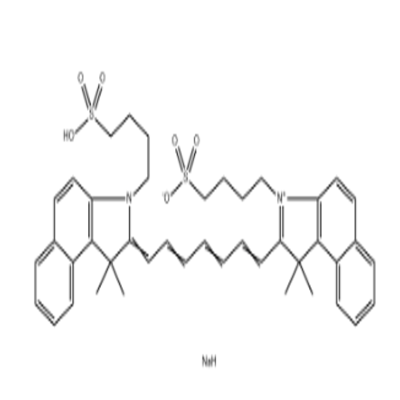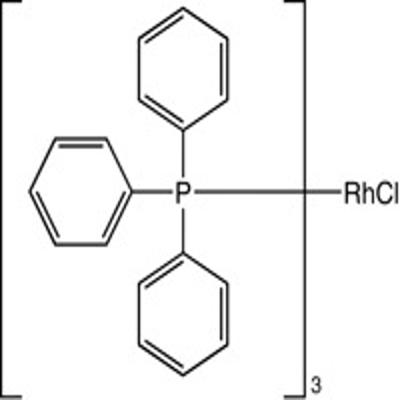Inventory: global research and development of stem cell products
-
Last Update: 2019-11-24
-
Source: Internet
-
Author: User
Search more information of high quality chemicals, good prices and reliable suppliers, visit
www.echemi.com
Author: Stem cell therapy refers to a new science and technology of injecting stem cells or their products from autogenous or allogeneic sources into human body to achieve the purpose of disease treatment At present, there are 18 kinds of stem cell products approved to market in the world, involving indications such as knee osteoarthritis, acute myocardial infarction, graft-versus-host disease, Crohn's disease, etc., but there is no relevant product approved in China At present, China adopts the "dual track management mode" to supervise stem cell therapy products, in which the clinical research and transformation application carried out in medical institutions are managed by the national health and Health Commission, while the drug regulatory department is responsible for the application for listing after the completion of clinical trials of cell therapy products According to the information of the application and registration section of insight database, after stem cell therapy was stopped in 2012, CDE opened the acceptance channel for stem cell drug registration again in 2018 As of November 8, 2019, it accepted 8 applications for new stem cell drugs, and there are no approved products on the market Before that, the main body of registration and application of stem cell therapy was hospitals, mainly mesenchymal stem cells from umbilical cord and spinal cord Two thousand and eighteen After, the main applicants of stem cell drugs were Biopharmaceutical Enterprises, including Bosheng Zhuoyue Biotechnology (Beijing) Co., Ltd., sibyman Biotechnology (Shanghai) Co., Ltd., Shanghai ASAR Biotechnology Co., Ltd., Qingdao oak Biological Development Co., Ltd., Beijing Hanshi United Biotechnology Co., Ltd., Tianjin oncay cell genetic engineering Co., Ltd and Beibei At the same time, the source of stem cells is further enriched, and the mesenchymal stem cells from fat and pulp are increased In addition, sibyman, ASAR, Beijing Hanshi and other three companies took the lead in obtaining the first three tickets for clinical trials of stem cells In the future, they will respectively carry out clinical trials of fat, umbilical cord, placenta mesenchymal stem cells in the treatment of knee osteoarthritis and diabetic foot ulcer Table 1 stem cell therapy declared according to drug registration in China From the perspective of product end, there are 18 kinds of stem cell products approved for market in the world The indications involved include knee osteoarthritis, acute myocardial infarction, degenerative arthritis, graft-versus-host disease, Crohn's disease, Heller's syndrome, thromboangiitis obliterans, membranous stem cell deficiency, adenosine deaminase deficiency, serious limb blood deficiency caused by Buergers disease and Alzheimer's disease Table 2 list of global stem cell therapy products* *The above data are from the official websites of drug administration of various countries From the perspective of regulators, the United States, the European Union, Japan and South Korea are the main countries to approve stem cell drugs, with 2, 5, 2 and 5 stem cell products approved respectively In the United States, cells, tissues or cell-based products (HCT / PS) are classified and regulated 21cfr1271 classifies HCT / PS into low-risk and high-risk categories according to the known or possible risk of side effects in the recipient The main factors to evaluate the risk of side effects of HCT / PS are: whether the product is a minimum intervention (low risk) and more than a minimum intervention (high risk); whether the cells are homologous use (low risk) or non homologous use (high risk); whether the cells are (high risk) or not (low risk) combined with other components Such projects can apply for rmat certification of "advanced therapy of regenerative medicine" Owning the title of rmat can accelerate the time to market of innovative drugs of biotechnology companies There are two ways to regulate cell therapy in EU The first is to conduct clinical research and application according to advanced technology treatment medical products, and the European Drug Administration (EMA) is responsible for the approval and management The second is to follow the hospital exemption clause, and the hospital decides the treatment and application of patients Japan's stem cell products are classified into the catalogue of regenerative medicine products The concept is a drug or medical device containing or composed of human cells or tissues of self or homology, which is used for chemical therapy, changing biological characteristics and artificial gene operation or activating cells for disease treatment or tissue repair and regeneration In terms of supervision, it is regulated according to regenerative medicine products According to the risk potential of regenerative medicine, medical technology can be divided into three categories, among which category I is high risk, such as the use of induced pluripotent stem cells, embryonic stem cells, gene editing cells, and xenogeneic or allogeneic cells, etc.; category II is medium risk, the cells used are self cells that have changed their original biological characteristics after special treatment in vitro; category III is low risk, and the cells used are not in vitro Special treatment, and it's autogenous cell Regenerative medical products can not only be put on the market through general new drug approval channels, but also in the early stage of clinical trials, after verifying the safety of the products and expecting certain effectiveness of the products, they can be put on the market in a limited time with conditions Korean stem cell products belong to cell therapy products (CTPs) In terms of supervision, the Ministry of food and drug safety of South Korea is responsible for formulating and revising relevant regulations and guidelines of stem cells and exercising the approval right of cell therapy products in accordance with the authorization of the pharmaceutical act CTPs are regulated as biological products Stem cell products must be applied for clinical trials of new drugs first, and then enter phase I, phase II and phase III clinical trials after approval to verify their safety and effectiveness Only after passing the clinical trial can an application for marketing license of new drugs be submitted, and only after approval can the new drugs be marketed South Korea has also included the minimum operation (resection, scraping, centrifugal filtration, cleaning) of stem cells in medical centers as non cell treatment products under the supervision of medical practice (Medical Service Law) According to the information of insight database enterprise analysis section, the seven leading enterprises that submit the application for stem cell medicine ind after 2018 belong to small early biotechnology companies The company has a short establishment time, a small scale and no scale effect Most of its resources are used for research and development activities and are not listed At the same time, in the early stage of the company's variety stage, the product pipeline is single, most companies only develop one stem cell product, and there is no listed variety At this stage, the above seven companies have occupied the first mover advantage of stem cell medical practice by submitting the registration application of stem cell drugs, but they lack the funds, experience of large-scale clinical trials and the channel ability of how to make profits before the patent expires after the product is launched In the future, with the vigorous development of stem cell industry, small biotech companies may cooperate with large pharmaceutical companies / capital to take over the "baton" to provide financial support for expensive later clinical trials and subsequent commercial marketing activities Table 3 registration and application of stem cells Up to now, there are more and more giant enterprises in the field of cross-border stem cell and cell therapy The smaller ones include Jiuzhitang, Shiyao group, Tianshili, etc and the larger ones are Haier Group Although the stem cell industry is still on the rise, the biotechnology industry represented by stem cell and regenerative medicine is regarded as a new hope of medicine The industry itself has a good demand prospect, and the policy escort for the development of the industry and other factors are widely welcomed by the investment community, which will attract more enterprises to invest in the future Table 4 Summary of stem cell investment in China There are still many technical difficulties in stem cell research, such as the selection of types of stem cells to be developed, the need to induce differentiation of stem cells, or the need to select the surface marker of stem cells, the safety of IPSC technology, etc., which limit the development of stem cells as drugs The choice of technology should not only consider the safety and effectiveness of drugs, but also consider the feasibility of production and the homogeneity and stability between batches, and finally ensure that core patents can effectively protect products In addition, we also look forward to more domestic products with clear ingredients such as GLP grade stem cell culture medium and cryopreservation solution Whether allogeneic cell therapy technology can realize automatic mass production is the most important link of stem cell therapy from laboratory to market In the past, most companies providing equipment for cell therapy focused on developing somatic cells, such as cart and other treatment supporting equipment, such as GE Healthcare in the United States, Miltenyi biotech in Germany However, these mature devices can not be directly applied in the development of allogeneic stem cell drugs At present, the solution of large-scale adherent culture and automatic filling system will still limit the automatic and large-scale production of stem cells as drugs China's stem cells are in the ascendant as drug development, not only the relative lack of stem cell direct practitioners, but also the supporting toxicology evaluation scheme, clinical overall strategy, and even Drug Administration approval system in the whole new drug development system need to further accumulate experience It is worth mentioning that CDE teachers welcome enterprises to conduct multi-dimensional exchanges on stem cell therapy drugs, which also reflects the support and support of national policies for stem cell drugs.
This article is an English version of an article which is originally in the Chinese language on echemi.com and is provided for information purposes only.
This website makes no representation or warranty of any kind, either expressed or implied, as to the accuracy, completeness ownership or reliability of
the article or any translations thereof. If you have any concerns or complaints relating to the article, please send an email, providing a detailed
description of the concern or complaint, to
service@echemi.com. A staff member will contact you within 5 working days. Once verified, infringing content
will be removed immediately.







